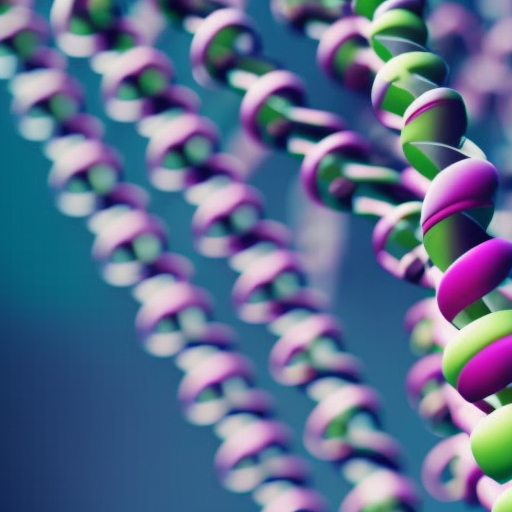Summary:
Genetic mutations are changes in the DNA sequence that can occur naturally or be induced by external factors. These mutations can have various effects on an organism, ranging from no noticeable impact to severe health conditions. Mutations can occur in different parts of the DNA, including genes, regulatory regions, and non-coding regions. They can be classified into different types, such as point mutations, insertions, deletions, and chromosomal rearrangements. Understanding genetic mutations is crucial for studying the causes of diseases, developing treatments, and advancing genetic engineering technologies.
Types of Genetic Mutations:
Genetic mutations can be classified into several types. Point mutations are the most common type and involve the substitution of a single nucleotide base with another. Insertions and deletions, also known as indels, involve the addition or removal of nucleotide bases, respectively. These types of mutations can cause a shift in the reading frame of a gene, leading to a completely different protein being produced. Chromosomal rearrangements, such as translocations and inversions, involve changes in the structure of chromosomes and can have significant effects on gene expression and function.
Causes of Genetic Mutations:
Genetic mutations can occur spontaneously during DNA replication or as a result of exposure to external factors called mutagens. Mutagens can include chemicals, radiation, and certain viruses. Some mutations can also be inherited from parents if they are present in the germ cells (sperm or egg cells). Mutations that occur in somatic cells (non-reproductive cells) are not passed on to offspring but can still have significant consequences for the individual.
Effects of Genetic Mutations:
The effects of genetic mutations can vary widely. Some mutations have no noticeable impact on an organism’s health or development. Others can cause genetic disorders, such as cystic fibrosis or sickle cell anemia, which result from mutations in specific genes. Mutations can also contribute to the development of cancer by disrupting the normal regulation of cell growth and division. In some cases, mutations can even be beneficial, providing an advantage in certain environments or leading to the evolution of new traits.
Diagnosing and Treating Genetic Mutations:
Diagnosing genetic mutations often involves genetic testing, which can analyze an individual’s DNA for specific mutations or variations associated with certain conditions. This information can be used for early detection, risk assessment, and family planning. Treatment options for genetic mutations depend on the specific condition and can range from symptom management to gene therapy. Gene therapy aims to correct or replace the faulty gene responsible for a genetic disorder, offering the potential for a cure or significant improvement in the patient’s condition.
Advancements in Genetic Engineering:
Understanding genetic mutations has also paved the way for advancements in genetic engineering technologies. Scientists can now use techniques such as CRISPR-Cas9 to precisely edit the DNA sequence of organisms, including humans. This has the potential to revolutionize medicine by allowing the correction of genetic mutations that cause diseases. However, ethical considerations and potential unintended consequences of genetic engineering must be carefully addressed.
In conclusion, genetic mutations are changes in the DNA sequence that can have various effects on an organism. They can occur naturally or be induced by external factors and can be classified into different types. Understanding genetic mutations is crucial for studying diseases, developing treatments, and advancing genetic engineering technologies. Genetic testing and gene therapy are important tools for diagnosing and treating genetic mutations, and advancements in genetic engineering offer promising possibilities for the future.












